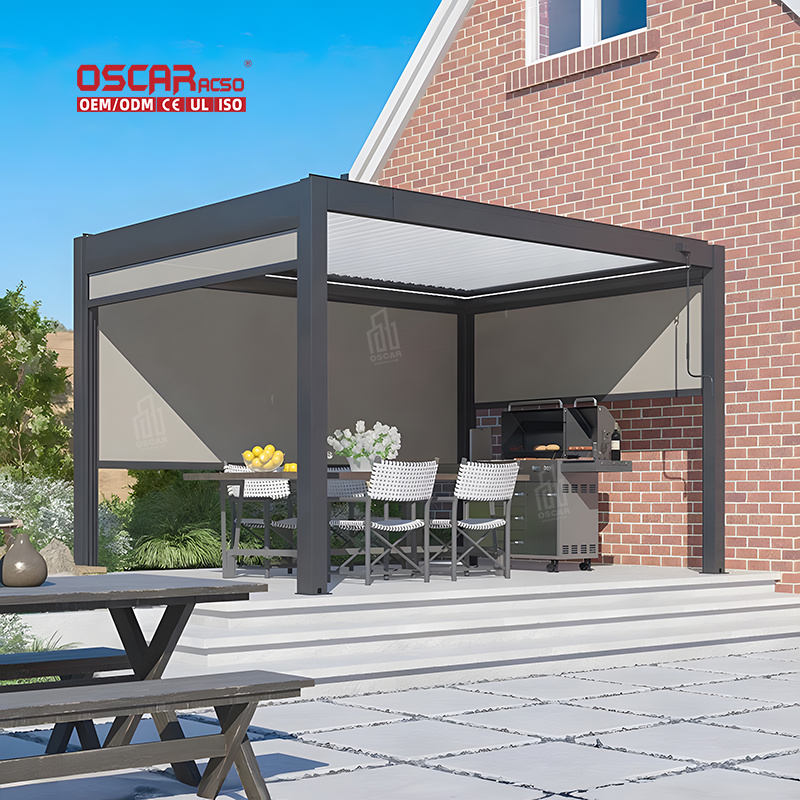Pergola Overhang Mastery, Unlock Shade and Style with Perfect Proportions
A pergola’s overhang isn’t just a design detail—it’s a functional masterpiece that defines shade, weather protection...

A pergola’s overhang isn’t just a design detail—it’s a functional masterpiece that defines shade, weather protection, and visual harmony. Getting it right transforms your outdoor space from ordinary to extraordinary. Let’s explore how to balance beauty and practicality with the ideal overhang. 🌿
🌟 Why Overhang Size Matters
The overhang, the part of the pergola that extends beyond its support posts, plays a crucial role in shade coverage, weather protection, and architectural balance. A well-proportioned overhang enhances usability, allowing you to enjoy the space during rain or intense sun, while an improperly sized one can compromise both function and safety.
📏 Standard Overhang Recommendations
While personal preference and specific needs influence the final decision, common guidelines exist:
- •
Typical Range: The standard overhang for a pergola roof is often around 1 foot (12 inches). However, many designs comfortably extend between 1 to 3 feet.
- •
General Limit: It’s generally advised that overhangs should not exceed 36 inches without additional support to prevent sagging or structural issues. Some recommend a more conservative maximum of around 28 inches.
- •
Beam Overhang: For beams, a common guideline is to have an overhang of 1.5 feet on each side, adding a total of 3 feet to the beam’s length.
🔧 Factors Influencing Your Overhang Choice
The perfect overhang for your pergola depends on several key factors:
- •
Climate & Weather: In areas with heavy rain or intense sun, a larger overhang (e.g., 18-24 inches) offers better protection. In windy regions, a more modest overhang might be prudent for stability.
- •
Pergola Attachment: Is your pergola attached to your house or freestanding? Attached pergolas usually have an overhang only on the sides not connected to the ledger board.
- •
Desired Shade & Function: Determine how much shade you want and how you’ll use the space. A larger overhang creates more shaded area, ideal for dining sets or lounging furniture.
- •
Aesthetic Proportion: The overhang should complement the overall size of your pergola. A very large overhang on a small structure can look unbalanced, and vice versa.
🛠️ Practical Considerations and Limitations
Beyond aesthetics, practical constraints are vital for a safe and durable structure.
- •
Structural Support: Longer overhangs require adequate beam size and proper post anchoring to handle the additional leverage and weight. For spans over 10 feet, larger beams (like 2×10 or 2×12) are often recommended.
- •
Material Matters: The type and thickness of your lumber (e.g., 2×6, 2×8) influence how far it can confidently span and overhang without support.
- •
Building Codes: Always check local building regulations. Some areas may have specific restrictions on overhang lengths for safety.
❓ FAQ: Addressing Common Overhang Questions
- •
Can the overhang be adjusted after construction?
Modifying an overhang after build is complex. It’s best to plan carefully during the design phase. Some modern kits with modular designs might offer more flexibility.
- •
What’s the cost implication of a larger overhang?

A larger overhang may slightly increase material costs due to longer beams and potentially more substantial supports, but it greatly enhances functionality.
- •
How does overhang affect shade patterns?
The overhang length directly controls the angle and extent of shade throughout the day. A longer overhang provides more consistent shade coverage, especially during peak sun hours.
.jpg)
💡 Professional Tips and Best Practices
For a successful project, keep these tips in mind:
- •
Visualize Before Building: Use strings or temporary poles to mock up the overhang size at different times of day to see the shade pattern it creates.
- •
Prioritize Drainage: Ensure your design sheds water away from seating areas and your home’s foundation, especially for solid-roof pergolas.
- •
Consider Future Needs: Think about potential additions like outdoor curtains, lighting, or fans; ensure your overhang provides enough space and support for them.
🎯 Final Insight: Balancing Boldness and Practicality
While the numbers provide a safe starting point, don’t be afraid to tailor the overhang to your unique vision. A bold, extended overhang can create a dramatic, sheltering effect, turning your pergola into a true outdoor room. Just ensure that its grandeur is matched by robust construction and smart planning. The most successful outdoor spaces are those where every detail, down to the inch of overhang, is intentional and harmoniously executed. ✨



